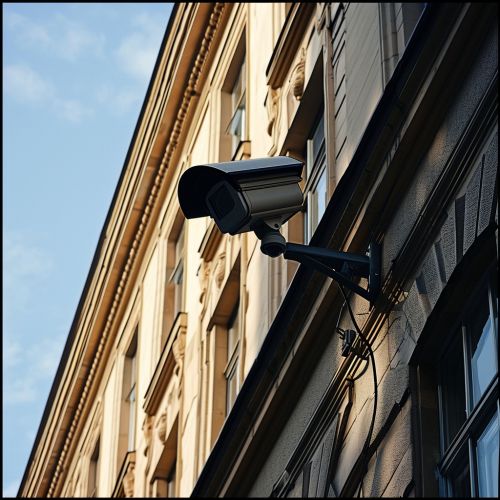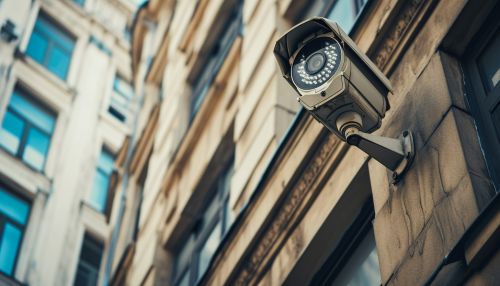Closed-circuit television
Overview
Closed-circuit television (CCTV) is a system where video cameras are used to transmit a signal to a specific place, on a limited set of monitors. It differs from broadcast television in that the signal is not openly transmitted, but is transmitted only to specific television monitors programmed or wired to receive a signal from those cameras.
History
The earliest documented use of CCTV technology was in Germany in 1942. The system was designed by the engineer Walter Bruch and it was set up for the monitoring of V-2 rockets. In the U.S., the first commercial closed-circuit television system became available in 1949, called Vericon. Very little is known about Vericon except it was advertised as not requiring a government permit.
Design and Installation
A CCTV system's most basic purpose is to provide monitoring and surveillance for a variety of environments. This is achieved through the strategic placement and installation of cameras, monitors and recording devices.


Types of CCTV Cameras
There are several types of CCTV cameras, each with its own set of features and specifications. These include the bullet camera, dome camera, PTZ camera, day/night camera, infrared/night vision camera, network/IP camera, wireless camera, high definition (HD) camera, and the thermal imaging/infrared camera.
Applications
CCTV is commonly used for a variety of purposes, including:
- Prevention and investigation of crimes
- Traffic monitoring
- Building and grounds security
- Industrial processes
- Access control
- Retail businesses
- Public transportation
- Sporting events
Privacy Concerns
There are privacy concerns regarding the use of CCTV. This is largely around the issue of surveillance and the ethics and legality of such practices. While CCTV can be seen as a security measure to prevent crime and monitor public behaviour, there are arguments that it constitutes an invasion of privacy.
CCTV in the Digital Age
With the advent of digital technology, the functionality and capabilities of CCTV have evolved significantly. The shift from analog to digital CCTV means that current systems can offer higher resolution, wider field of view, and recording features that were not possible with older, analog systems.
